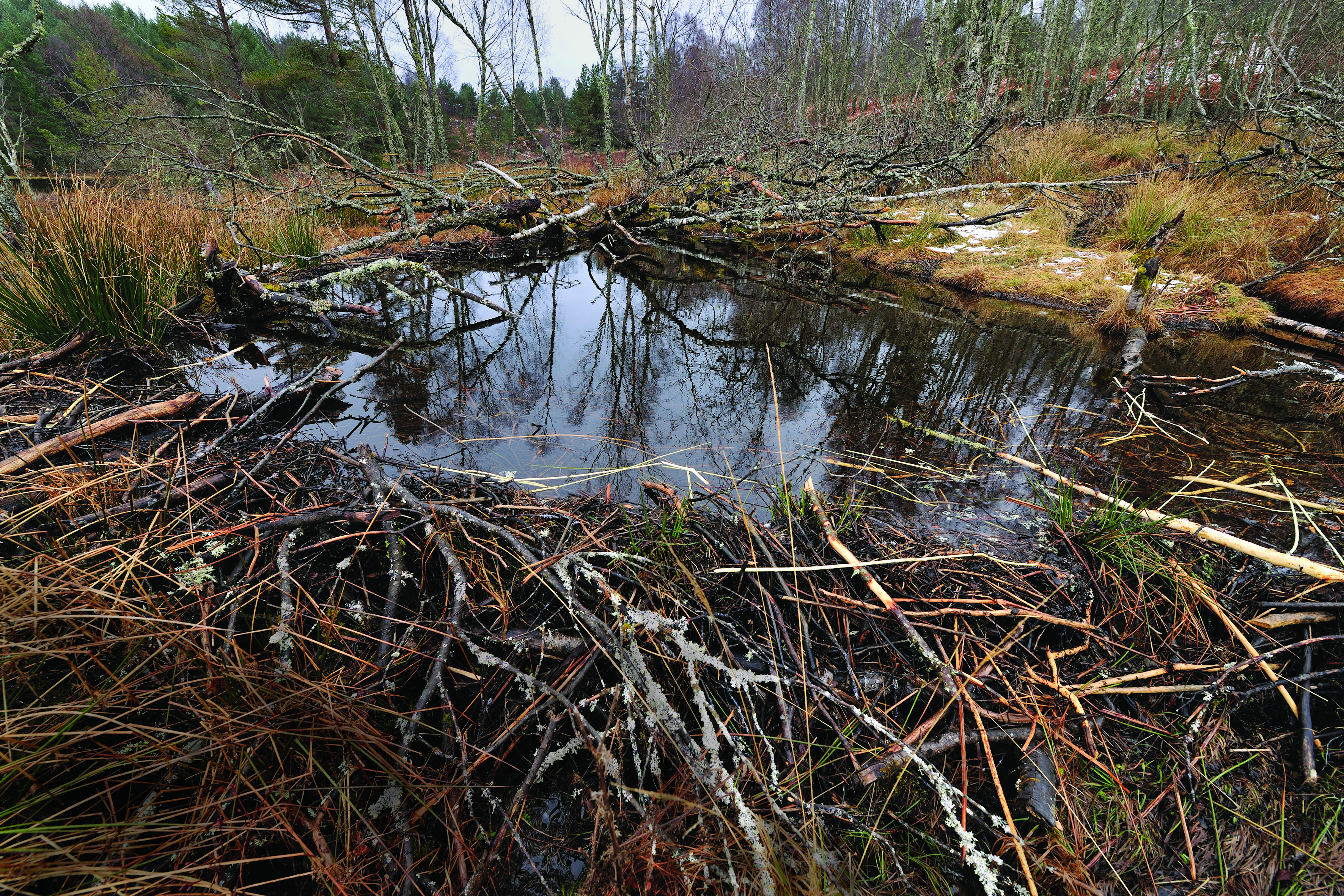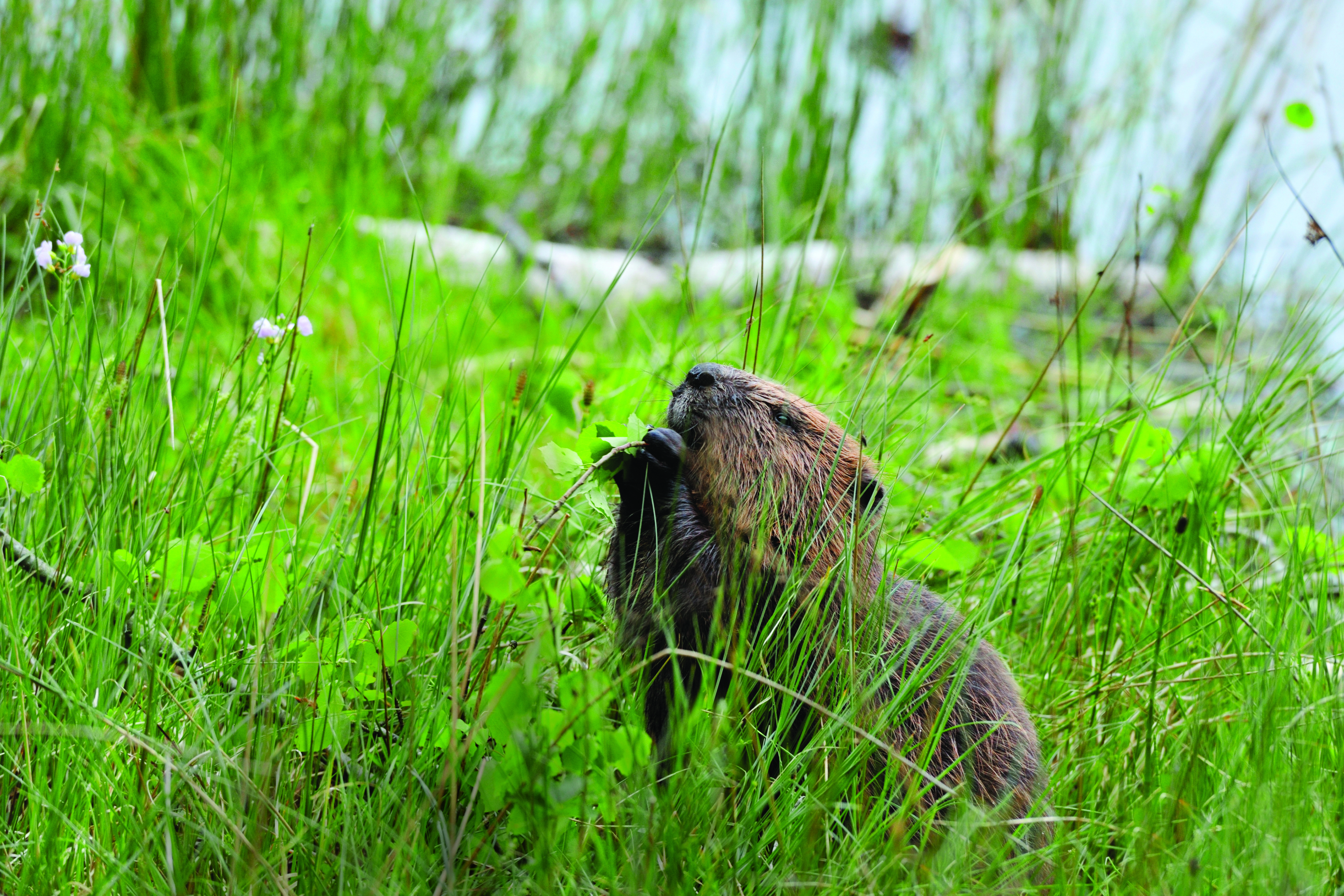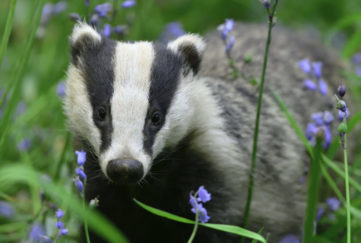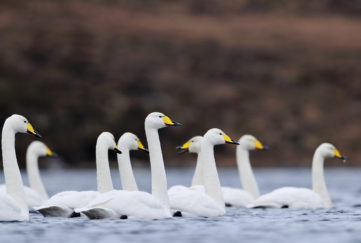A Flash Of Kingfisher – Jim Crumley
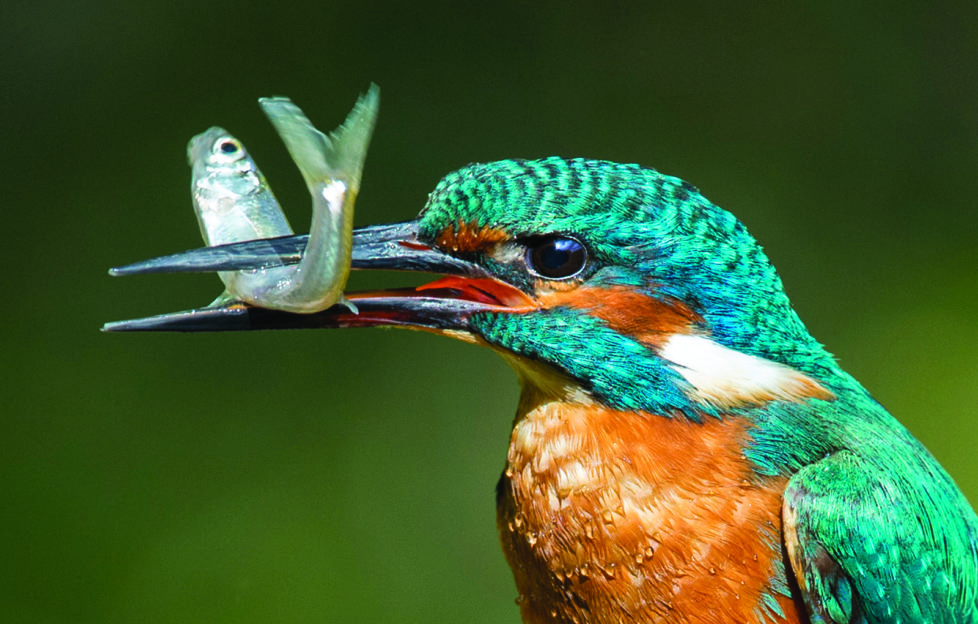

Jim Crumley says even a three-second sighting of the magical Kingfisher is precious, but hungry for more, he follows the clues upriver
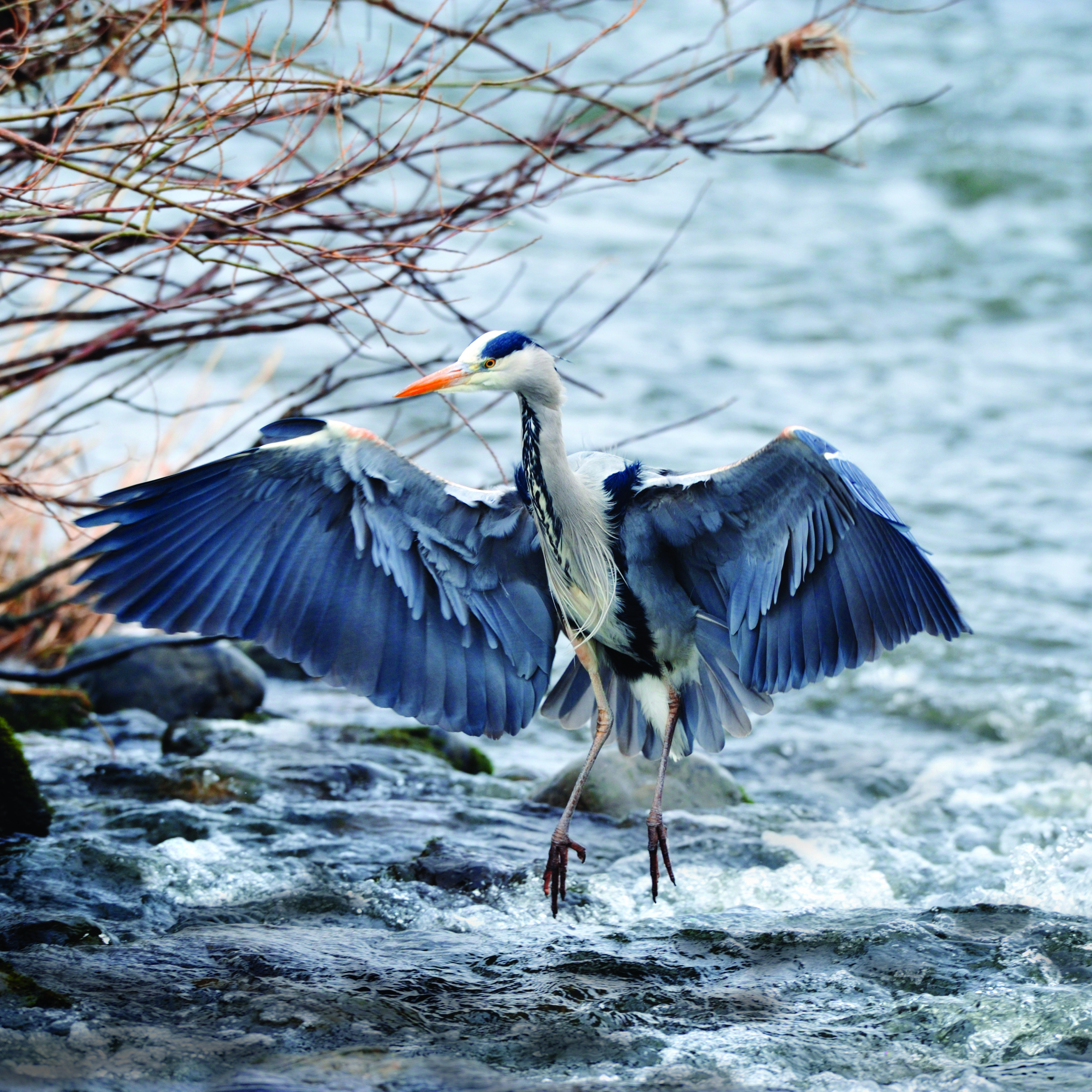
The grey heron cannot be crept up on. Pic credit: Laurie Campbell.
NO sooner have I reached the riverbank than a heron lifts from a river-watching stance in a fold in the ground, floats vertically over the trees, puppet legs dangling loosely, and vanishes.
No matter how carefully, how softly I arrive, it never seems to be careful enough or soft enough to outwit the herons.
The river seems unusually quiet, respectful of the May morning, nothing more vocal than a murmur where it quickens over a small promontory of stones.
A sedge warbler calls from reeds beyond the far bank, unseen as sedge warblers usually are. The voice is thin, harsh, comical, repetitive, and subscribes to no known definition of “warble”.
“Then fizz!”
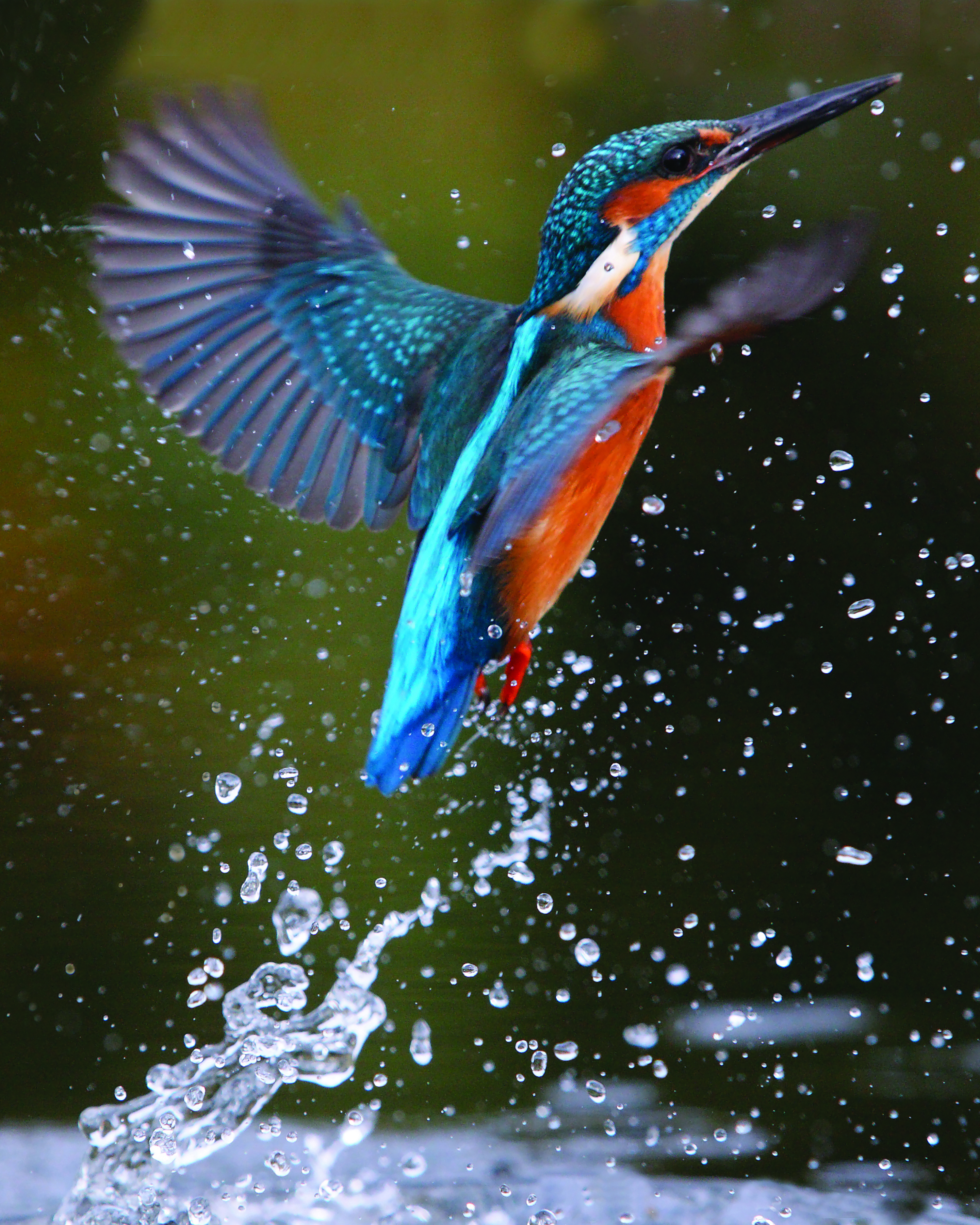
The kingfisher tears upstream! Pic credit: Laurie Campbell.
An hour passes in which nothing else moves or calls. Then fizz! The kingfisher tears upstream, ruffles the very air not a yard above the surface, startles the eyes (every time, no matter how often, the eyes never accustom themselves to what passes). It is the brightest blue, brighter than my last memory of it, brighter than where my imagination has pitched it in its absence, even in the darkest river-tree shadows to which its flight clings. Then, at the moment it banks right to follow the bend in the river, it crosses a small square of sunlight, and that shade of blue flares with an icicle sheen. Then gone.
Two seconds? Three at a push. But the morning, the river, the willows, the watcher on the bank… all are enlivened, enriched, renewed. What other bird does that? In two seconds?
Another hour tiptoes by, another hour of river murmur. Clouds begin to fleck the sky. A silken calm descends. The kingfisher must come back, so sit still, wait, become riverbank.
“The stroke of noon”
Then on the stroke of noon, the day stirs. Nature rouses, exhales; a warm breeze animates the willows, the grass, the reeds, the waterworld plants that thrive in the collapsing mulch of an old beaver dam.
The oaks behind me, less prone than willows to a breeze, contrive a kind of shrug.
Birds mobilise: the sedge warbler resumes, a song thrush crosses the river and perches in an oak. No song, though. A dipper arrives, lands among the stones where the river mutters, not five yards away, then wades chest-deep where the water covers a small shingle bed, feeding the lazy way – for a dipper – without diving down to walk on the river bed. Drops of water gleam on its feathers – biologically, it’s a large waterproof wren – and when it perches it throws something between a shadow and a reflection on the water, the image animated by ripples.
“But where are the kingfishers?”
The bend in the river reveals no sudden blue flashlight, for all that I stare at it for minutes at a time, with and without binoculars, in between bites of a slow riverbank lunch. Finally, a certain weariness creeps in. I recognise its symptoms, and it is my own way of telling myself that time’s up, for the quality of the watching is impaired.
One last resigned sweep of the glasses then, back along the riverbank, but in my mind I’m already heading for the nearest café.
That sweep pauses at the base of a big willow where its five trunks meet their own reflections, and the kingfisher is perched on the outermost end of the lowest, thinnest branch, upright as
a garden gnome. How the hell did it get there?
It flies a few yards to a spindlier willow, which has that old beaver dam for company.
- The old dam led to the formation of a still pool. Pic credit: Laurie Campbell.
- The beaver had created a win-win-win situation. Pic credit: Laurie Campbell.
When I first laid eyes on the dam, the beaver had already moved on; although around the same time one was filmed not far away by some canoeists, then there were no more sightings. But the dam was intact, and it was clear that its purpose was to create an area of calm water by the bank. Quite possibly it protected a burrowed underwater entrance into a lodge in the bank. Although the dam is now less clearly defined, it still achieves its original purpose, and that quiet, shallow pool between dam and bank is as alluring as ever for the neighbourhood kingfishers.
“A win-win-win situation”
This one perches in the willow’s lowest branch, four feet above the surface. The bird is side-on, the perfect profile, 50-50 blue and orange. As it shuffles sideways towards the end of the branch, there are glimpses of outrageously scarlet feet. Then it dives.
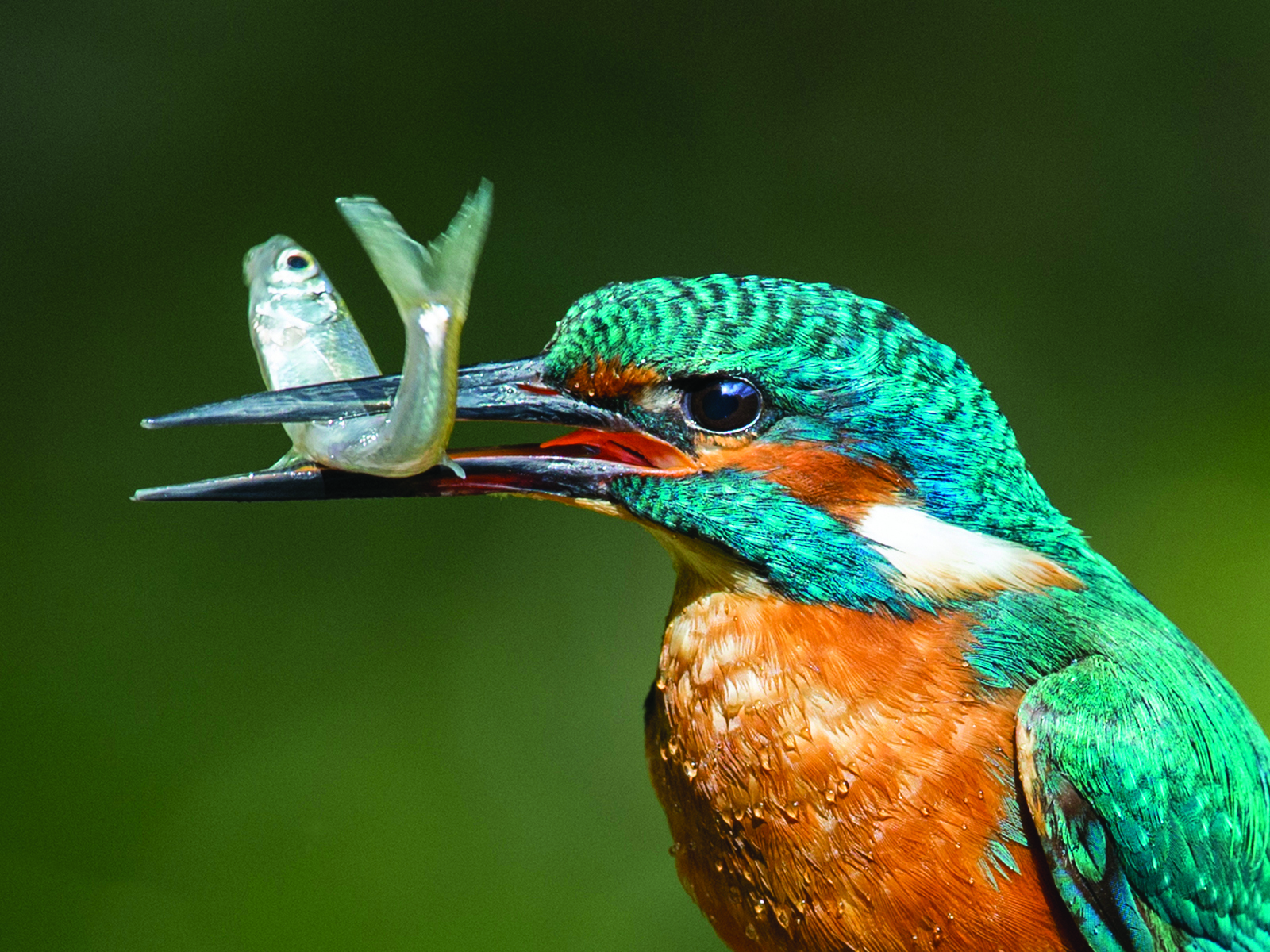
A-twitch in its bill. Pic credit: Laurie Campbell.
The dive is executed behind the beaver dam, so only the launch is visible, although there is an audible splash. Four or five seconds elapse between the dive and the bird’s reappearance on the same perch, and with a two-inch long fish a-twitch in its bill. Half a dozen violent thumps of the fish head against the branch take care of the twitches, then the fish is gone, head first.
A simple equation presents itself. More beavers equals more young fish in quiet, shallow waters, which equals more kingfishers. It’s what nature would call a win-win-win situation.
“A kingfisher hurtles past”
For once the river is stunned by sunlight and heat. I move from my accustomed seat to the shade of some oak trees very close to where the burn emerges. From here the view changes, and includes the next bend a hundred yards upstream. I suspect the bank on the outside of that second bend might accommodate the nest – it looks suitable at this distance – but the terrain is inaccessible without a) a canoe and b) knowledge of how to propel one expertly through variable river currents.
With the dilemma unresolved in my mind, a kingfisher hurtles past me into the upstream straight. But where it would have to deviate if it was heading for the suspected nest site, it takes the second bend flat out on the racing line and vanishes, leaving the shattered remnants of my theory in its wake. Vanishing and theory-shattering are what kingfishers do best.
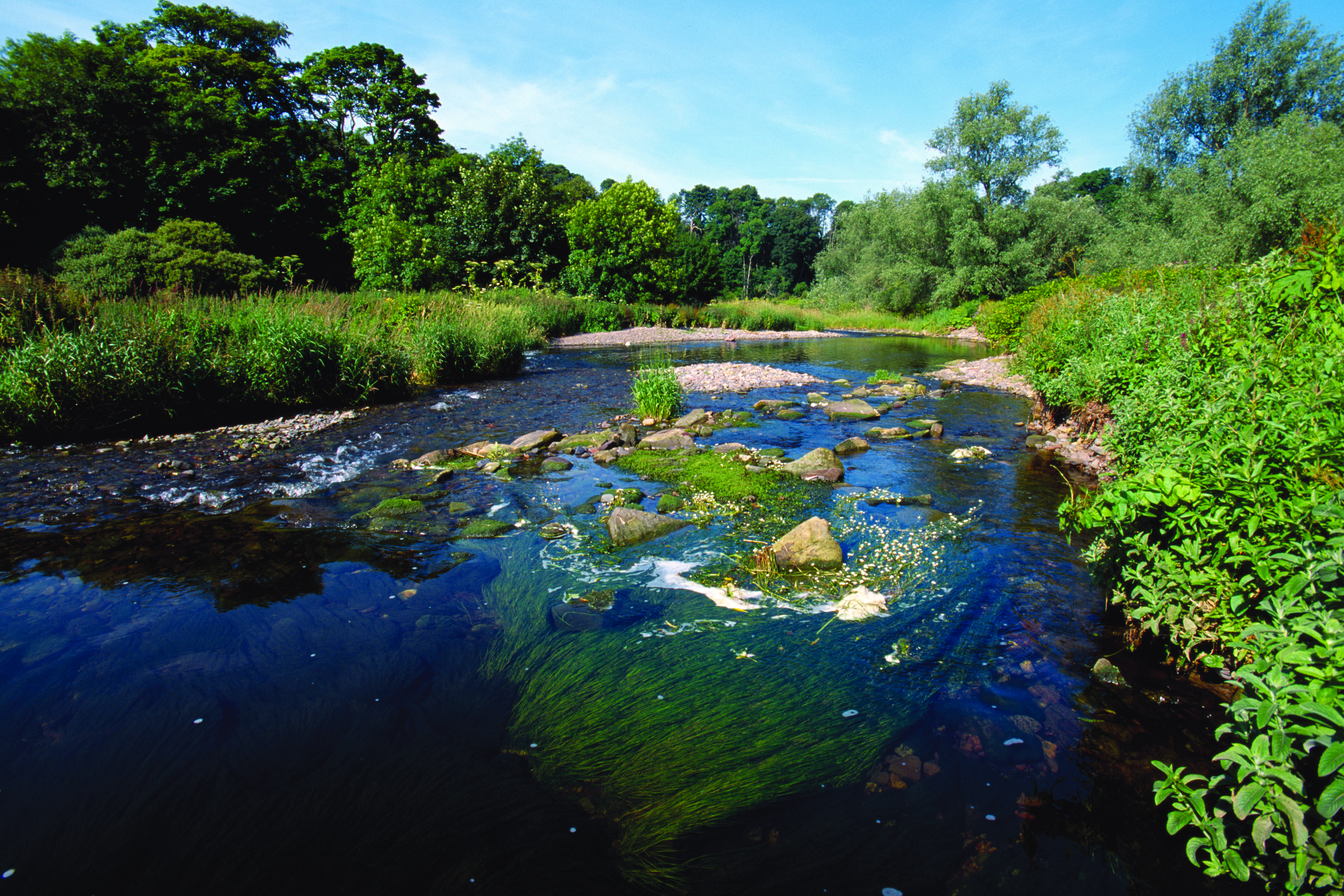
River Whiteadder, East Lothian. Pic credit: Laurie Campbell.
I want to know what happens next, how to compose a sounder theory. But the riverbank becomes un-navigable here, fankles progress with fallen trees and waist-deep channels that dart away from the mainstream then rejoin further down, carving the land into densely wooded and overgrown little islands. Yet within these luxuriantly-treed backwaters either side of the mainstream lie quiet pools overarched by slim tree trunks and limbs. If I can find a way in I suspect I might find a kind of kingfisher underworld.
“Sunlight pours in”
The place is hidden from every direction, and sunlight pours in. Trees crowd down to the far bank. And on the downstream exit from the basin, just as the current quickens, there is another small, densely treed island. Trees soon crowd in again on my side too, and the mown path peters out in a hidden cul-de-sac where a thin screen of willow branches is open enough to permit a view along 100 downstream yards.
It is through that screen that a kingfisher appears, calling, and disappears round the far side of the island. Almost at once, an unseen but much closer bird responds to its call. I have found my underworld.
There is a second response behind the island and a glimpse through the trees of a flying kingfisher. Seconds later, it speeds out round the near end of the island, fashions a tight right turn into the basin and the blaze of sunlight, and there it too catches fire. It passes by no more than ten yards out from the bank, cutting a diagonal across the water before another right turn takes it back into tree shadows where its fiery plumage cools. Seconds later it has vanished upstream.
“Birdsong”
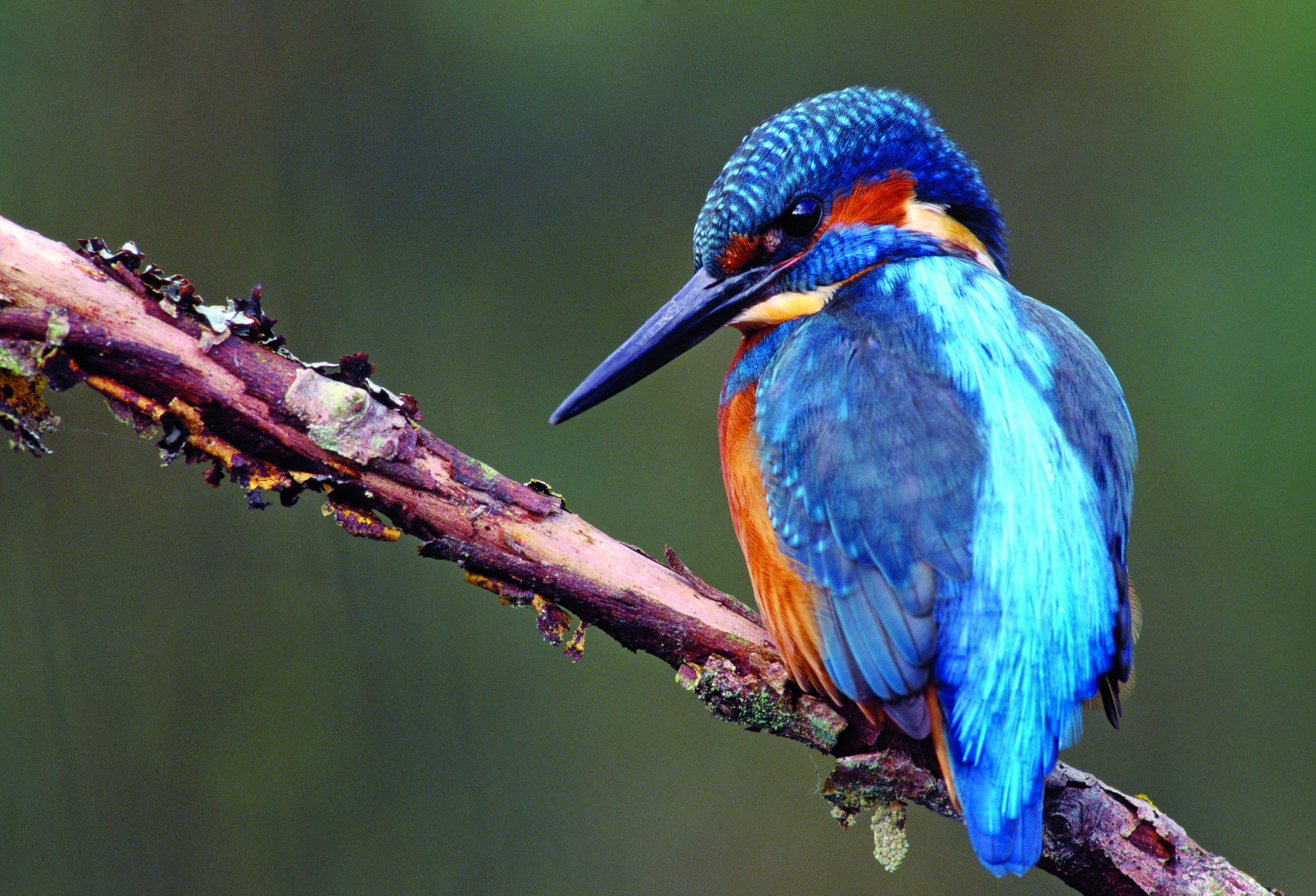
All the colours, none of the dazzle… yet. Pic credit: Laurie Campbell.
No sooner has it disappeared than a new kingfisher voice sounds, improbably close. I instruct myself to turn towards the sound very, very slowly.
This time the bird is not hard to find. It’s 30 yards away on a midstream perch where a river-borne tree limb with attendant branches has snagged against a low branch of an alder on the downstream edge of the island, and become anchored there. The kingfisher’s perch is four feet above the water. It faces me, stares straight at me.
It looks like this year’s model, the fully fledged progeny of an early brood, with all the colours in place but none of the dazzle. If this had been my first kingfisher, I might have wondered what all the fuss was about. Instead, I return the level gaze, try a one-sided mental experiment, seeking out its wavelength.
It goes something like this: How long have you been there?
And have you been watching me all that time?
Do you perch there to fish?
Unlikely. That’s dipper’s fishing terrain below you. You prefer calmer waters, like beaver dams, don’t you?
The kingfisher shudders in response, re-orders its plumage, takes off, U-turns in not much more than its own length, dives under the same branch where it perched a moment ago, and tears off downstream.
Just when I thought I was getting somewhere too.
You can read more of Jim Crumley’s Scottish wildlife columns online here, and each month in The Scots Magazine.


